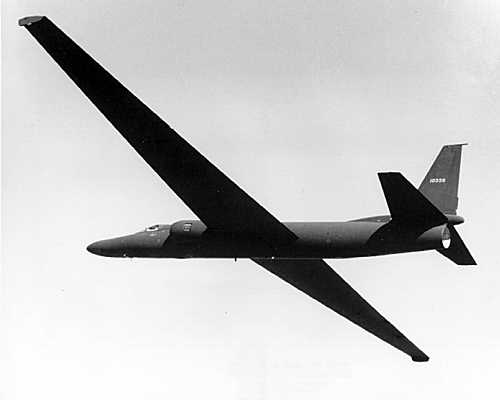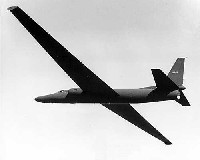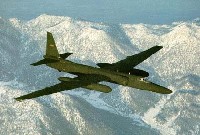|
Global Aircraft -- U-2 Dragon Lady
Aviation Center
US Attack
US Bombers
US Cargo
US Fighters
US Helicopters
US Patrol/Pursuit
US Reconnaissance
US Tankers
US Trainers
US UAV's
US X Planes
Orbiter Vehicles
WWI Aircraft
WWII Aircraft
Airbus
Antonov
Boeing
Dassault
Ilyushin
Kamov
MiG
Mil
Saab
Sukhoi
Tupolev
Yakovlev
Joint/Rest of World
Entertainment Center
Members Center
New Technologies
Contact Us
Extra Navigation
GAC Engine
U-2 Dragon Lady Specifications
U-2 Dragon Lady Achievements
U-2 Dragon Lady Features
The U-2S is a single-seat, single-engine, high-altitude, surveillance and reconnaissance aircraft. Long, narrow, straight wings give the U-2 glider-like characteristics and allow it to lift heavy sensor payloads to unmatched high altitudes quickly, and keep them there for a long time. The U-2 is capable of collecting multi-sensor photo, electro-optic, infrared and radar imagery, as well as collecting signals intelligence data. It can down link all data, except wet film, in near real-time to anywhere in the world, providing war planners with the latest intelligence possible. The U-2 has one the highest mission completion rates in the U.S. Air Force despite the fact that the aircraft is the most difficult to fly due to its unusually challenging takeoff and landing characteristics. Due to its high-altitude mission, the pilot must wear a full pressure suit. The aircraft has a General Electric F-118-101 engine that is fuel efficient and lightweight -- negating the need for air refueling on long duration missions. The fleet is undergoing an entire rewire effort to lower its overall electronic noise signature and allow a quieter platform for the newest generation of sensors. The sensors are also in a state of constant upgrades. The cockpit is being redesigned to replace the 1960s vintage round dial gauges with multifunction displays and complete "glass cockpit" technology. Source: http://www.af.mil
U-2 Dragon Lady Background
Current models are derived from the original version that made its first flight in August 1955. On Oct. 14, 1962, the U-2 photographed the Soviet military installing offensive missiles in Cuba. It provided critical intelligence data during all phases of operations Desert Storm and Allied Force. The U-2 provides daily peacetime indications and warning intelligence collection from its current operating locations around the world. When requested from the Federal Emergency Management Agency, the U-2 has also provided peacetime reconnaissance data in support of disaster relief from floods, earthquakes and forest fires, and has been used as a search and rescue asset on several occasions The U-2R, first flown in 1967, was 40 percent larger and more capable than the original aircraft. A tactical reconnaissance version, the TR-1A, first flew in August 1981 and was delivered to the Air Force the next month. Designed for standoff tactical reconnaissance in Europe, the TR-1 was structurally identical to the U-2R. Operational TR-1A's were used by the 17th Reconnaissance Wing, Royal Air Force Station, Alconbury, England, starting in February 1983. The last U-2 and TR-1 aircraft were delivered to the Air Force in October 1989. In 1992 all TR-1s and U-2s were designated U-2Rs. All U-2R models have since completed engine replacement and are designated as a U-2S/TU-2S. U-2s are based at the 9th Reconnaissance Wing, Beale Air Force Base, Calif., and support national and tactical collection requirements from various operational detachments located worldwide. U-2 crewmembers are trained at Beale using four two-seat model aircraft (designated TU-2S). Source: http://www.af.mil
| ||||||||||||||||||||||||||||||||||||||




